
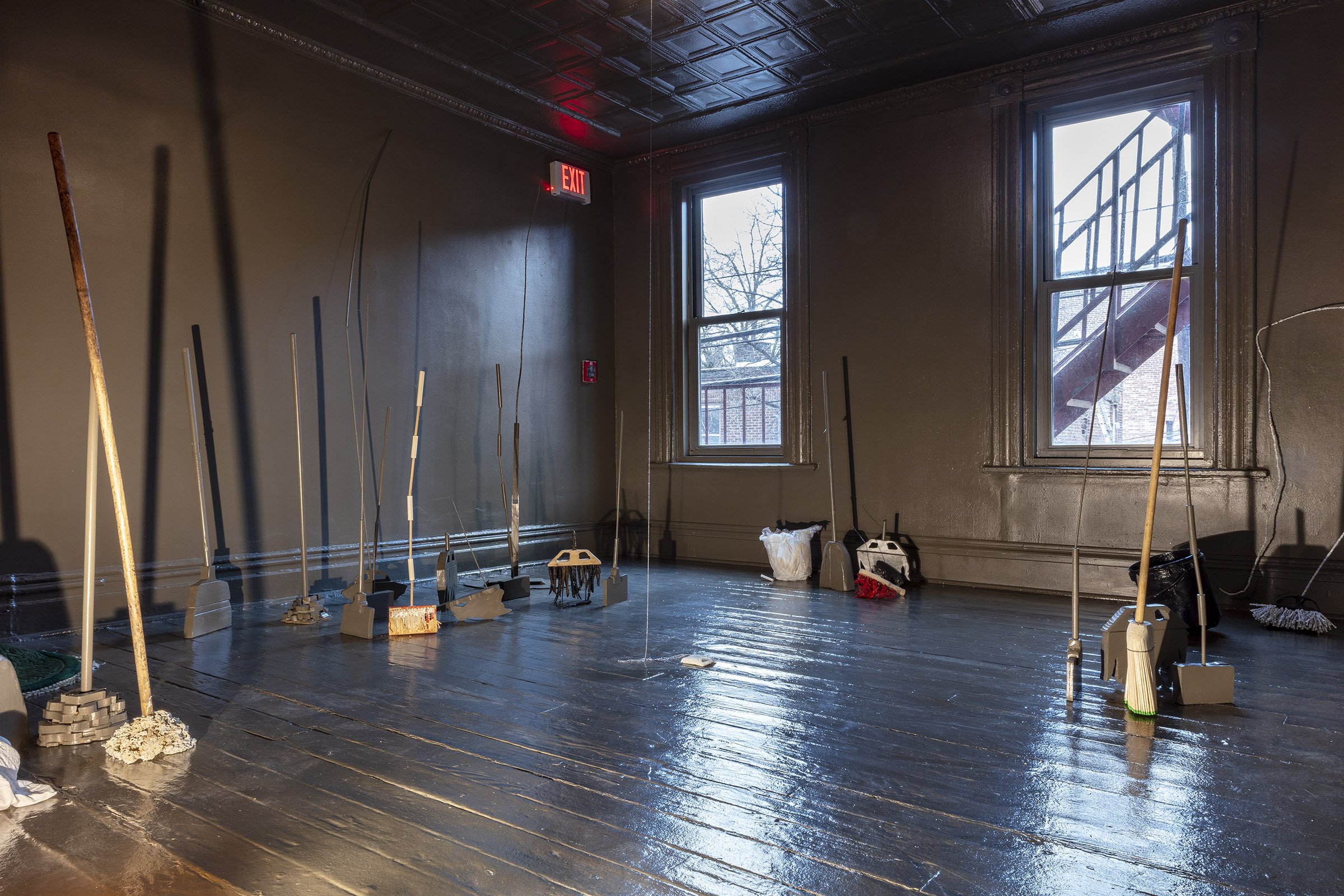
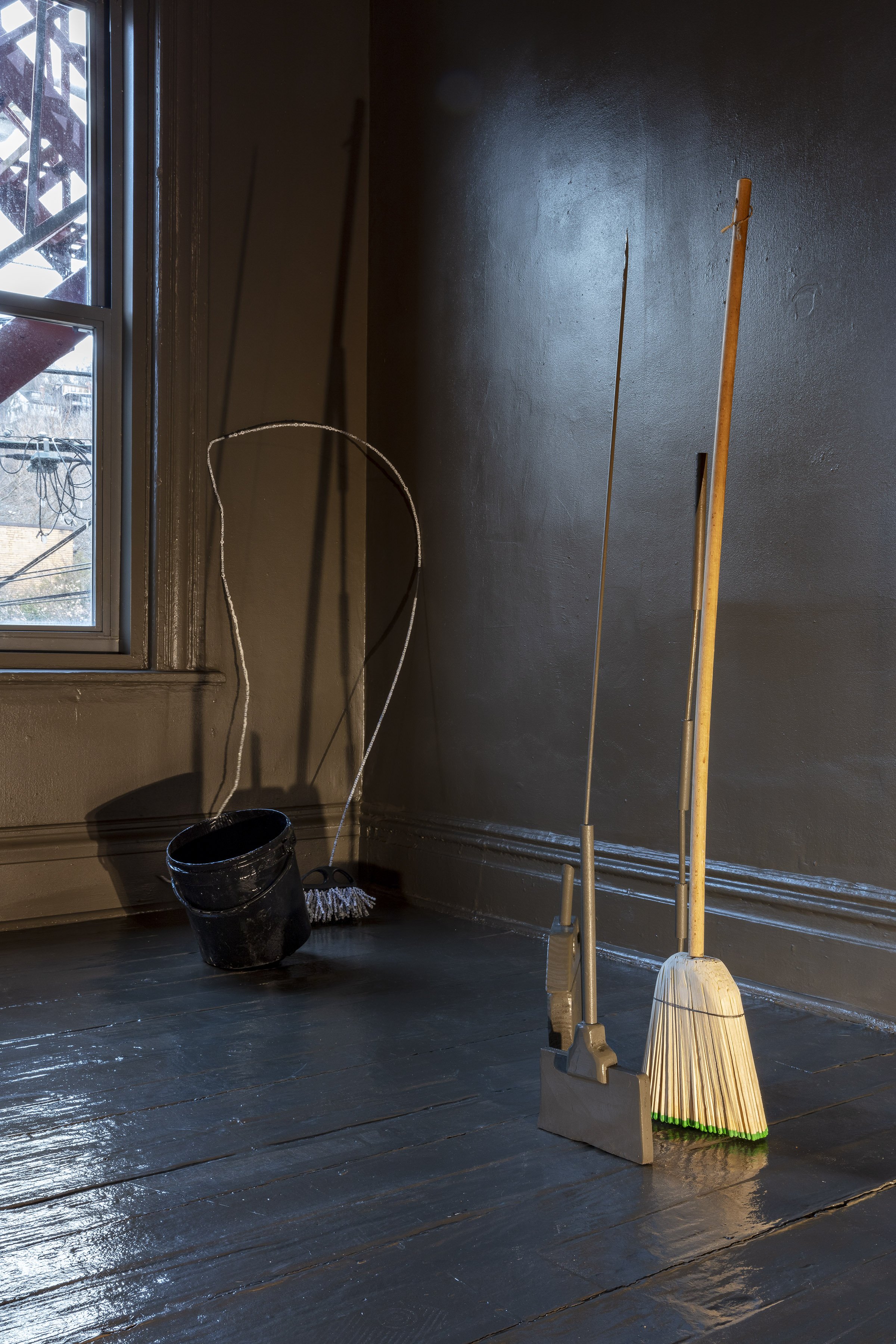
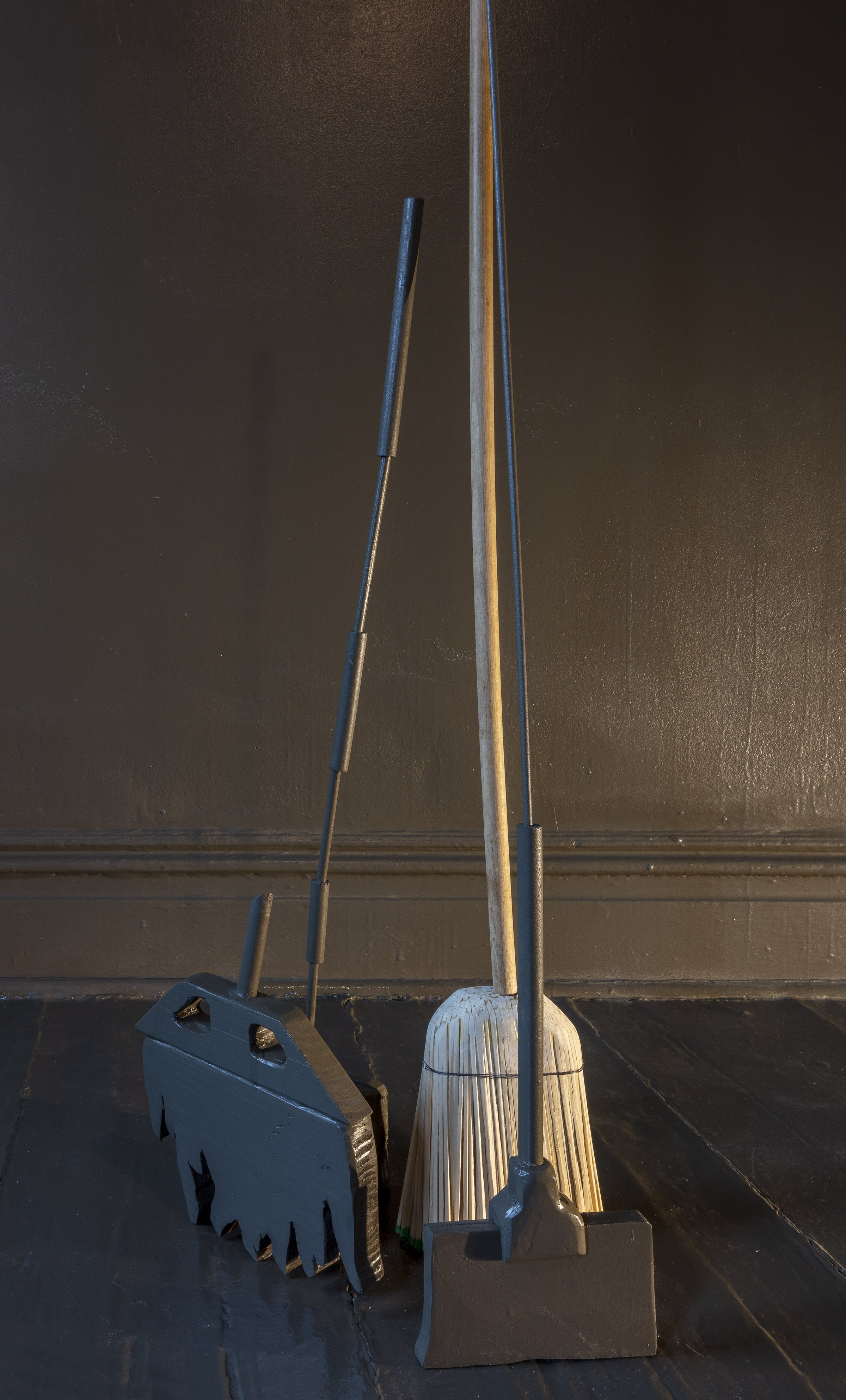
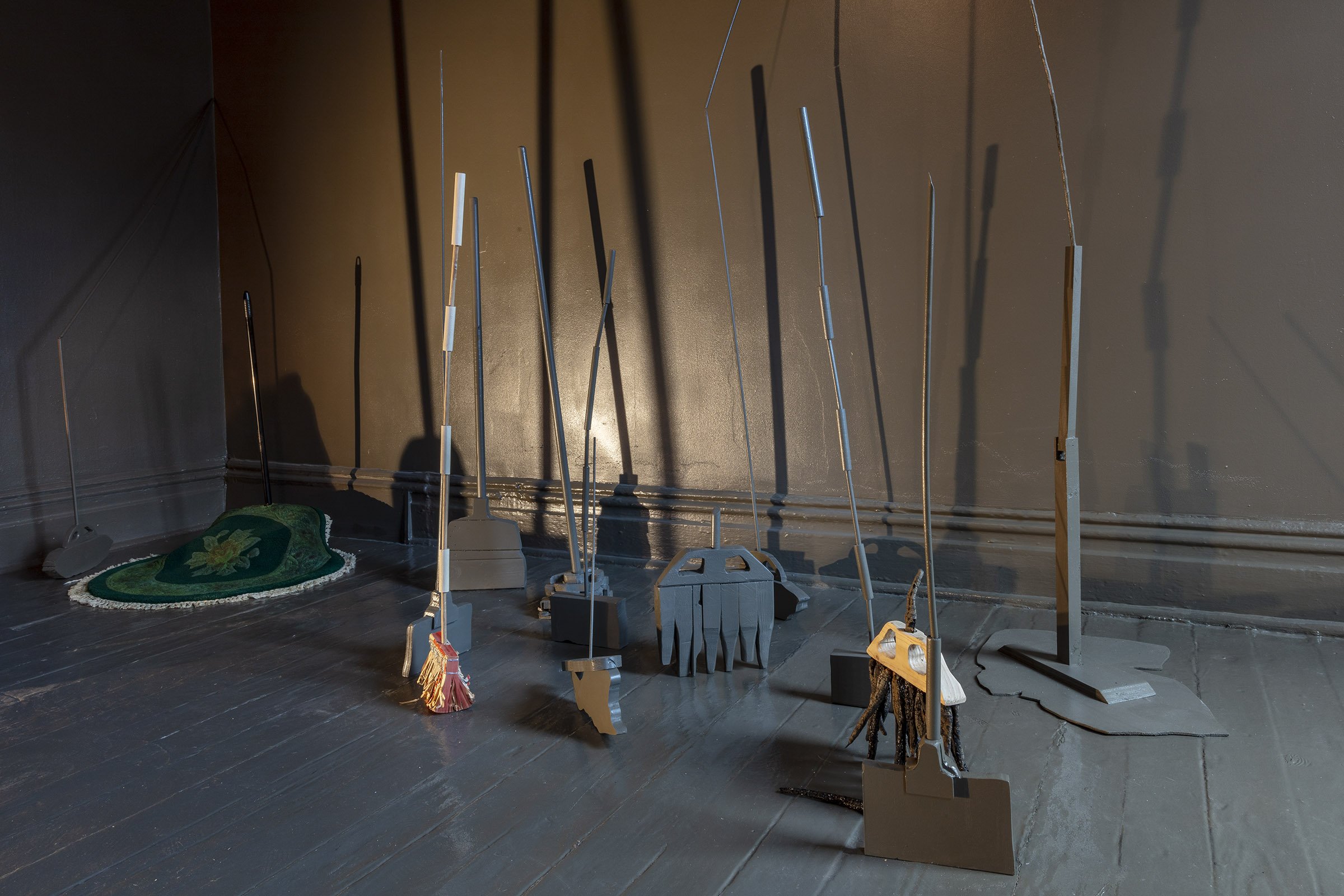
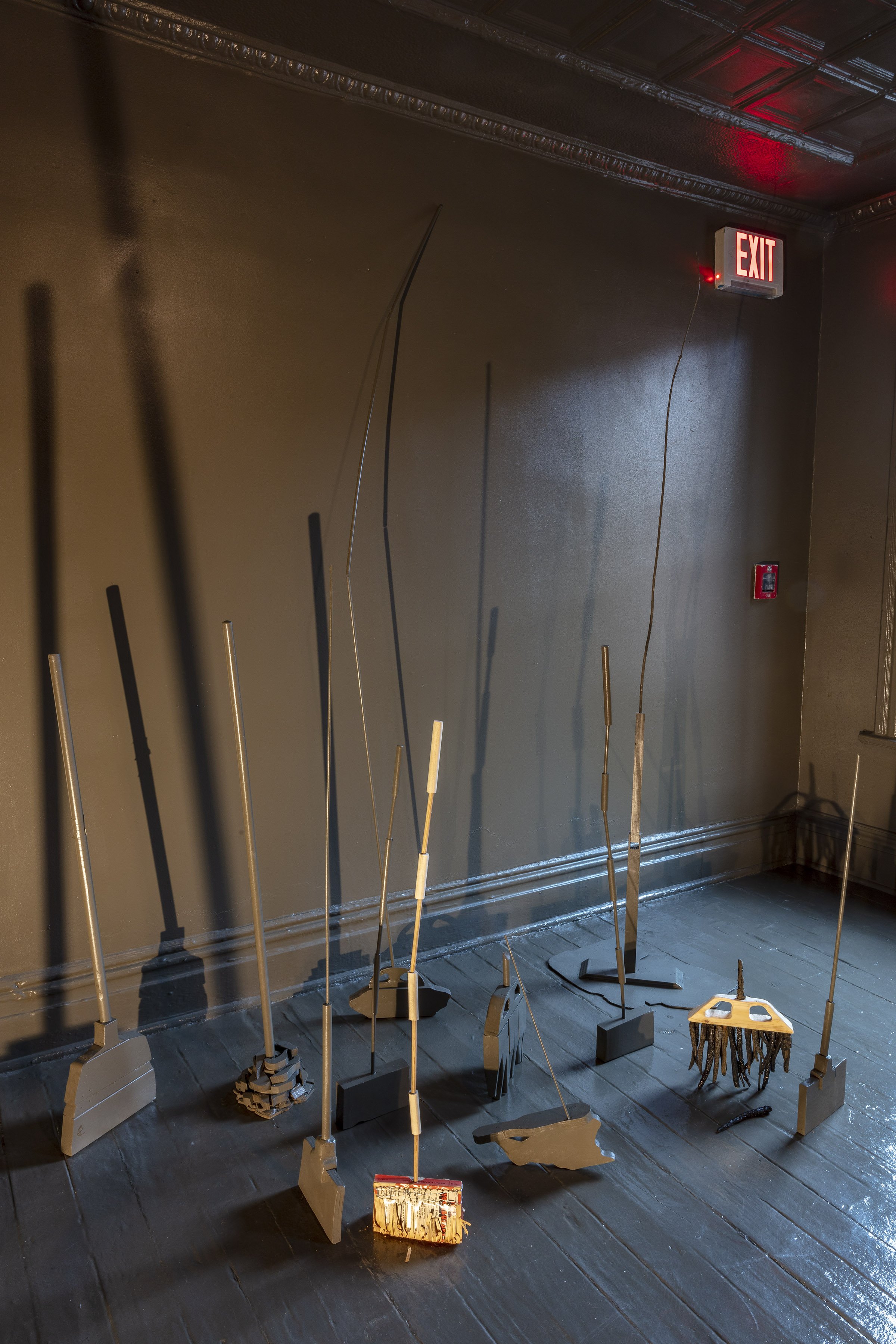
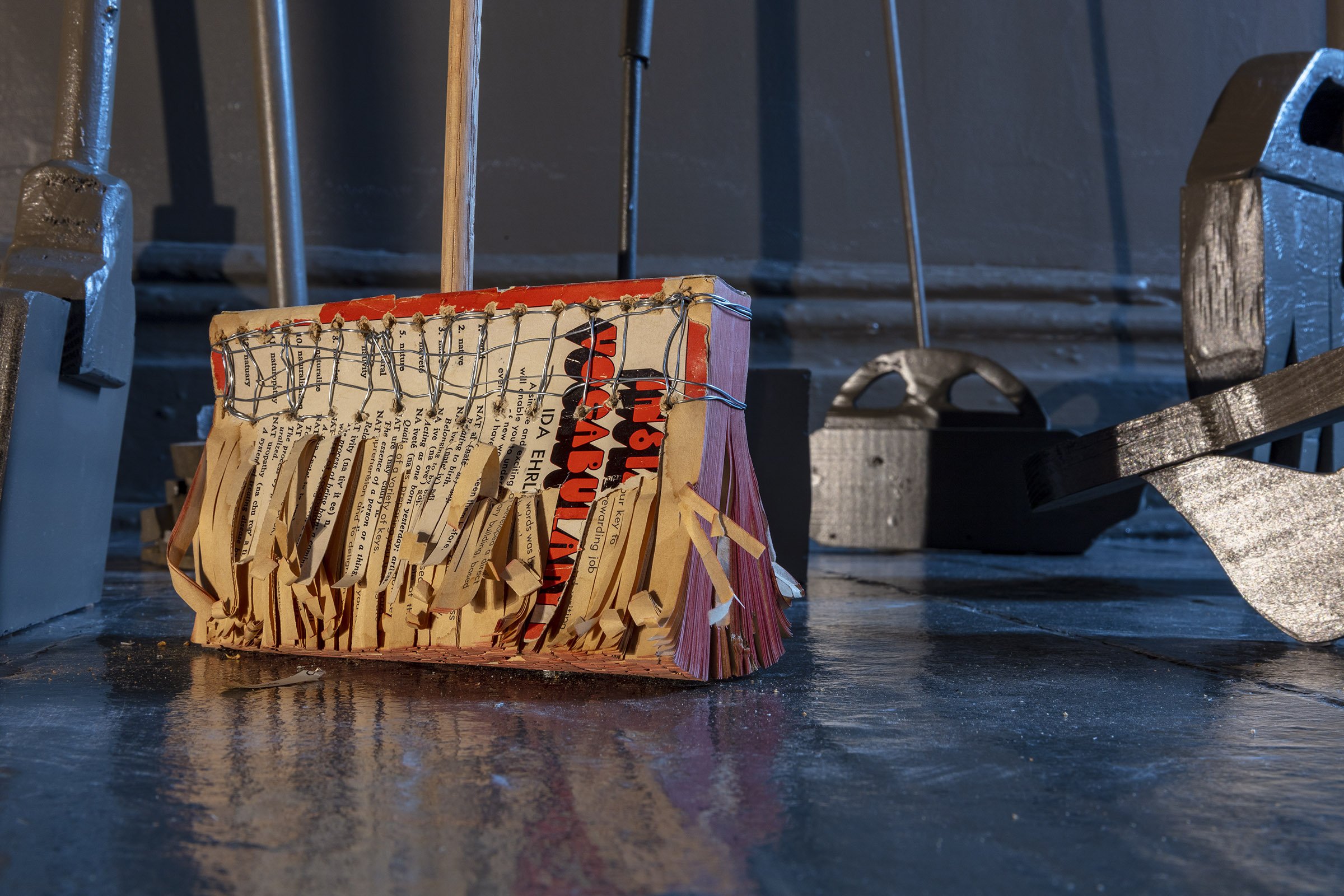
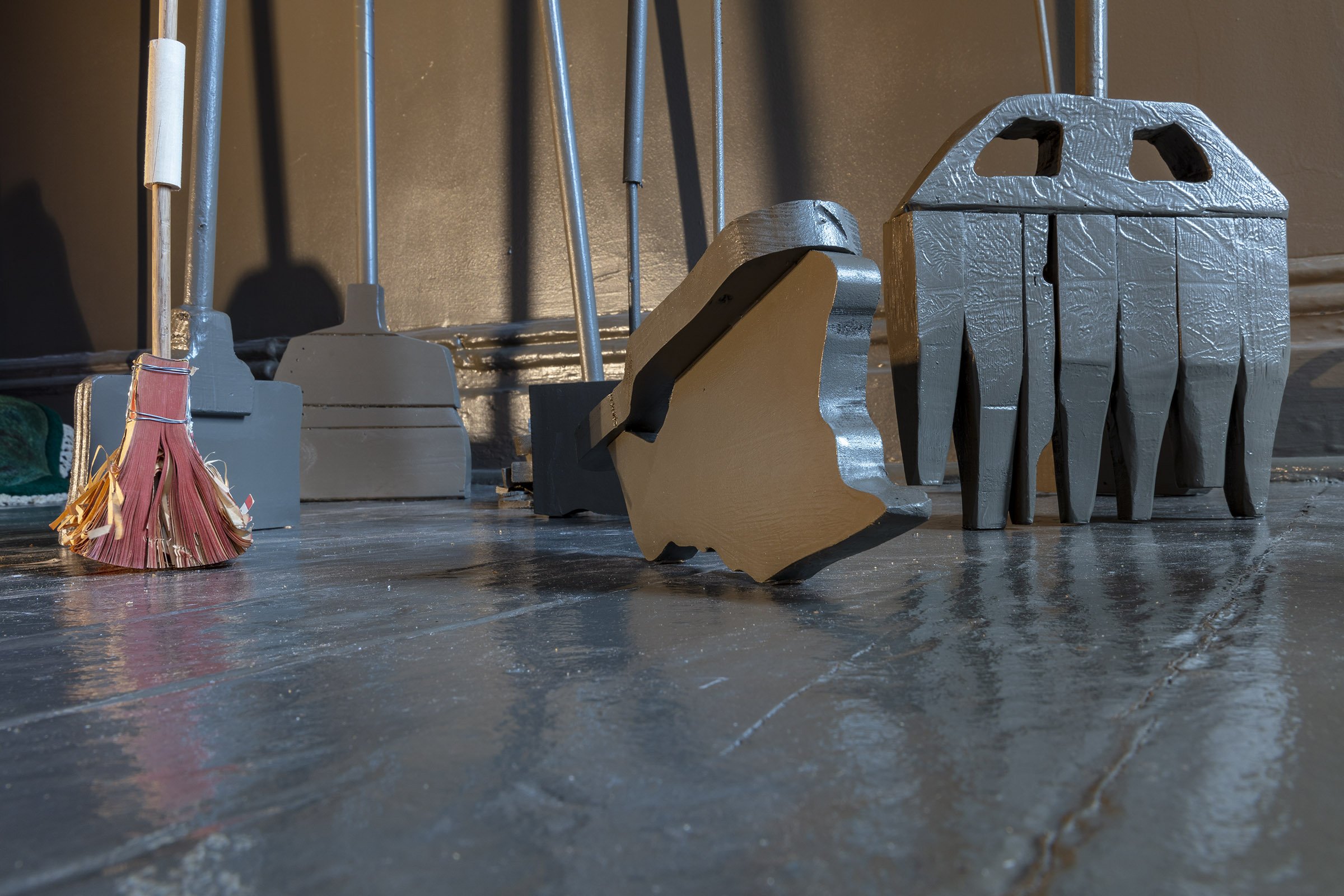
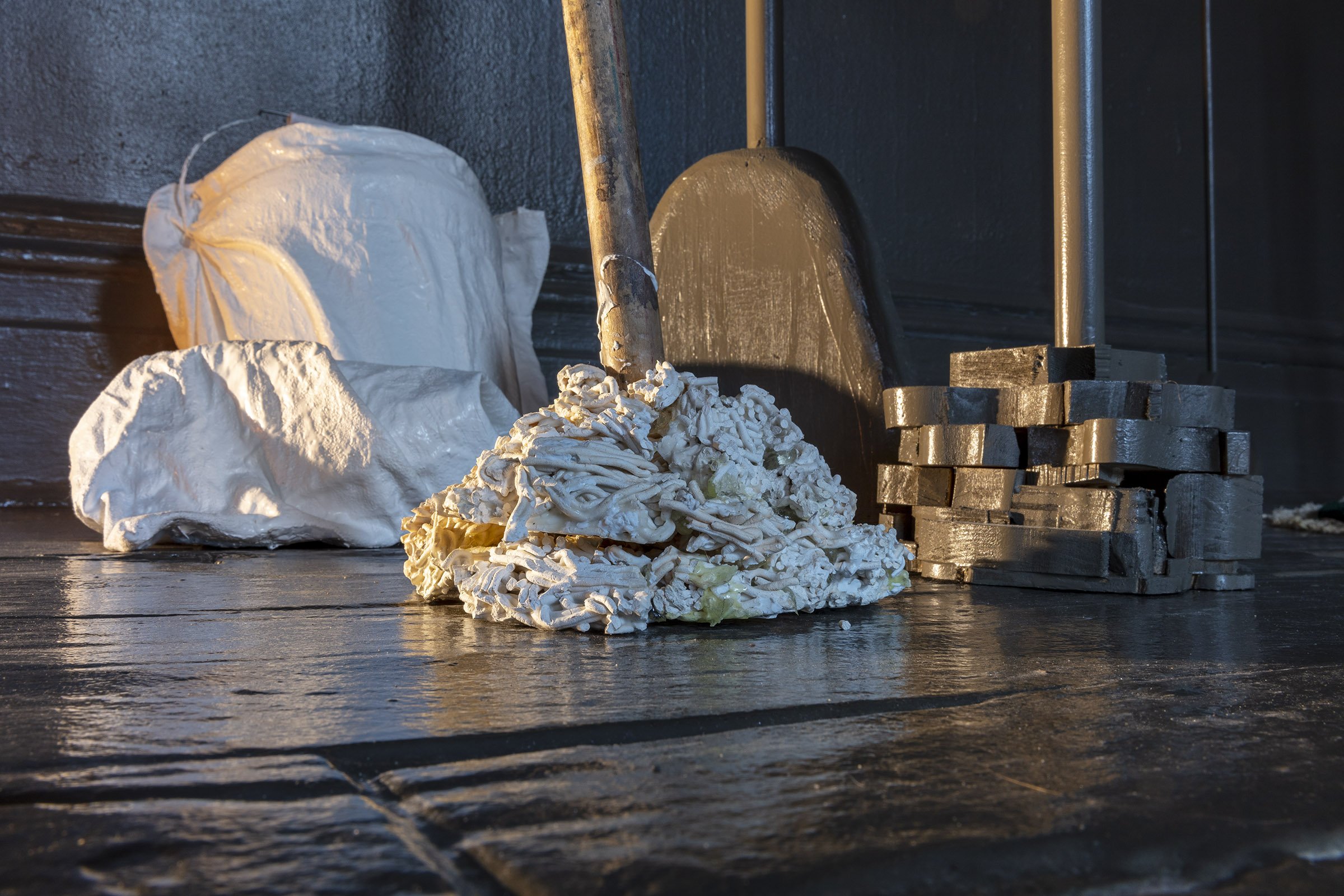
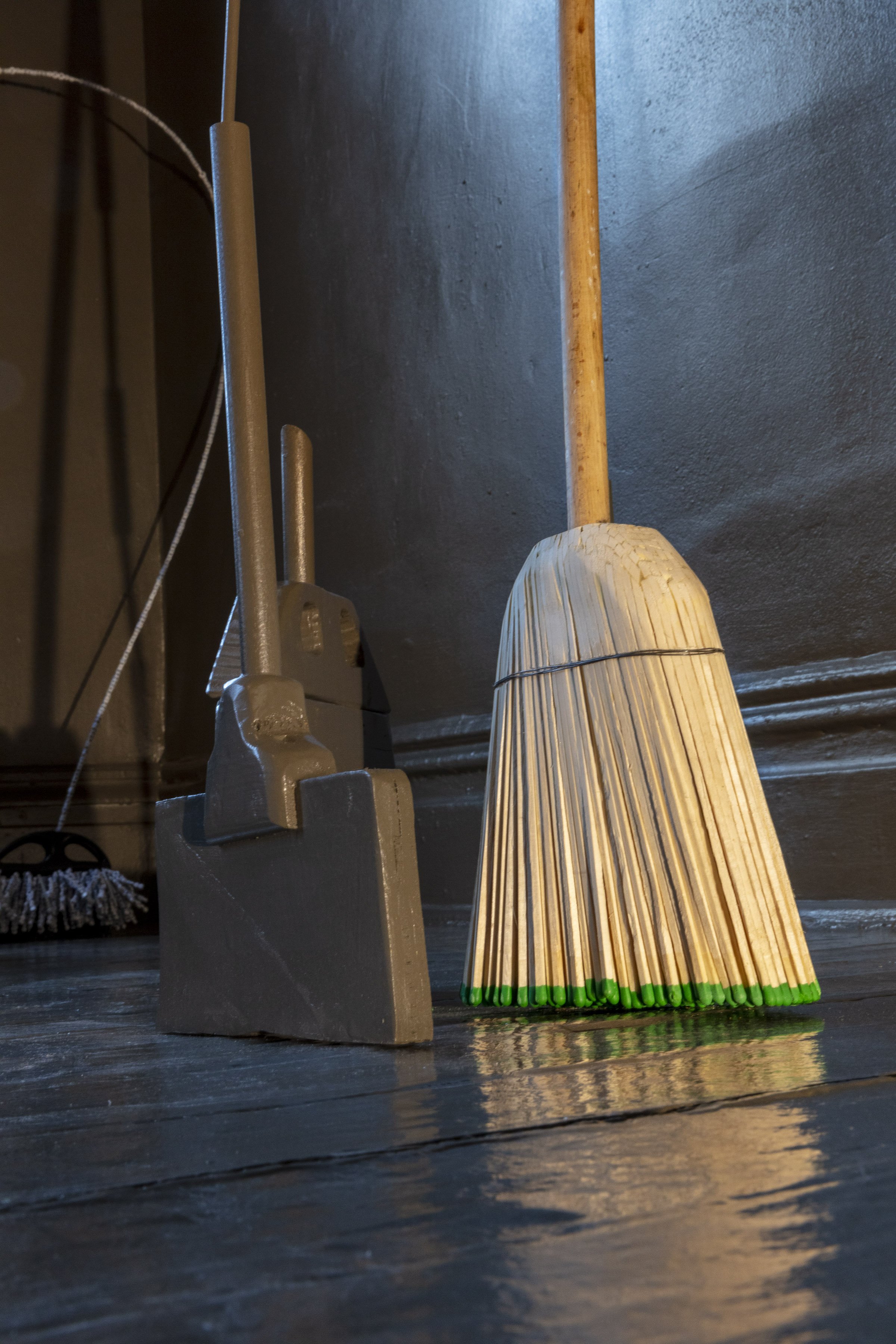
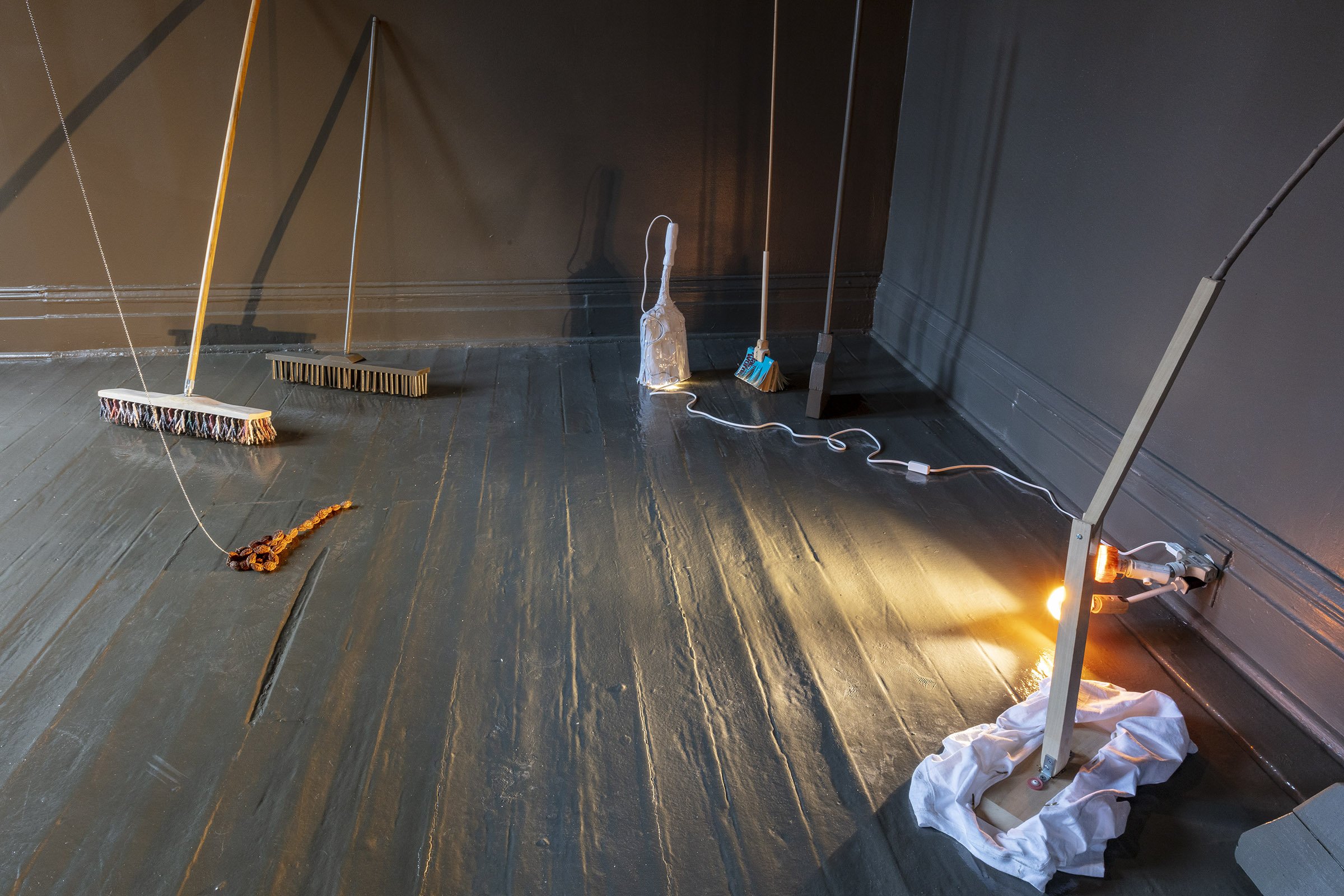
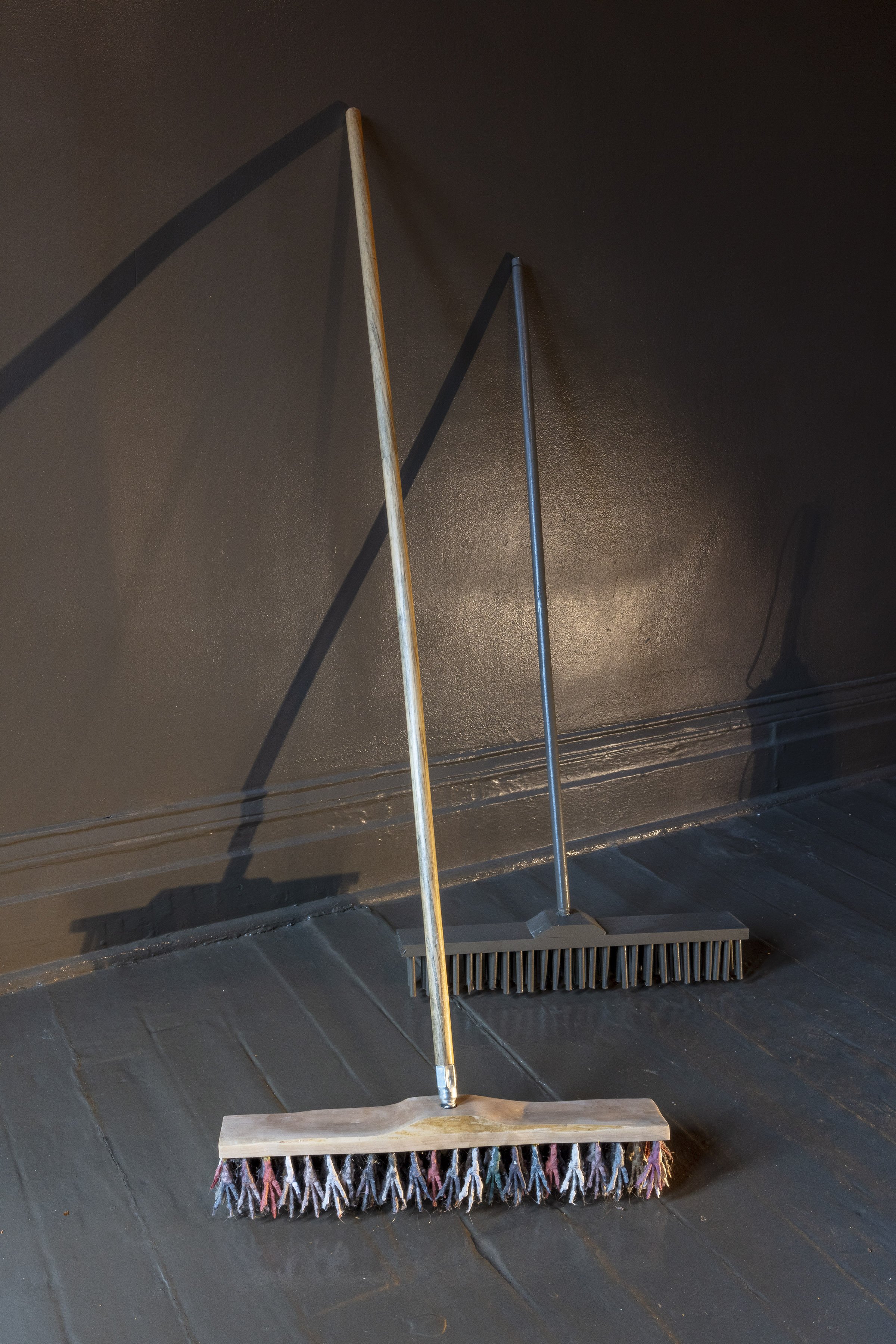
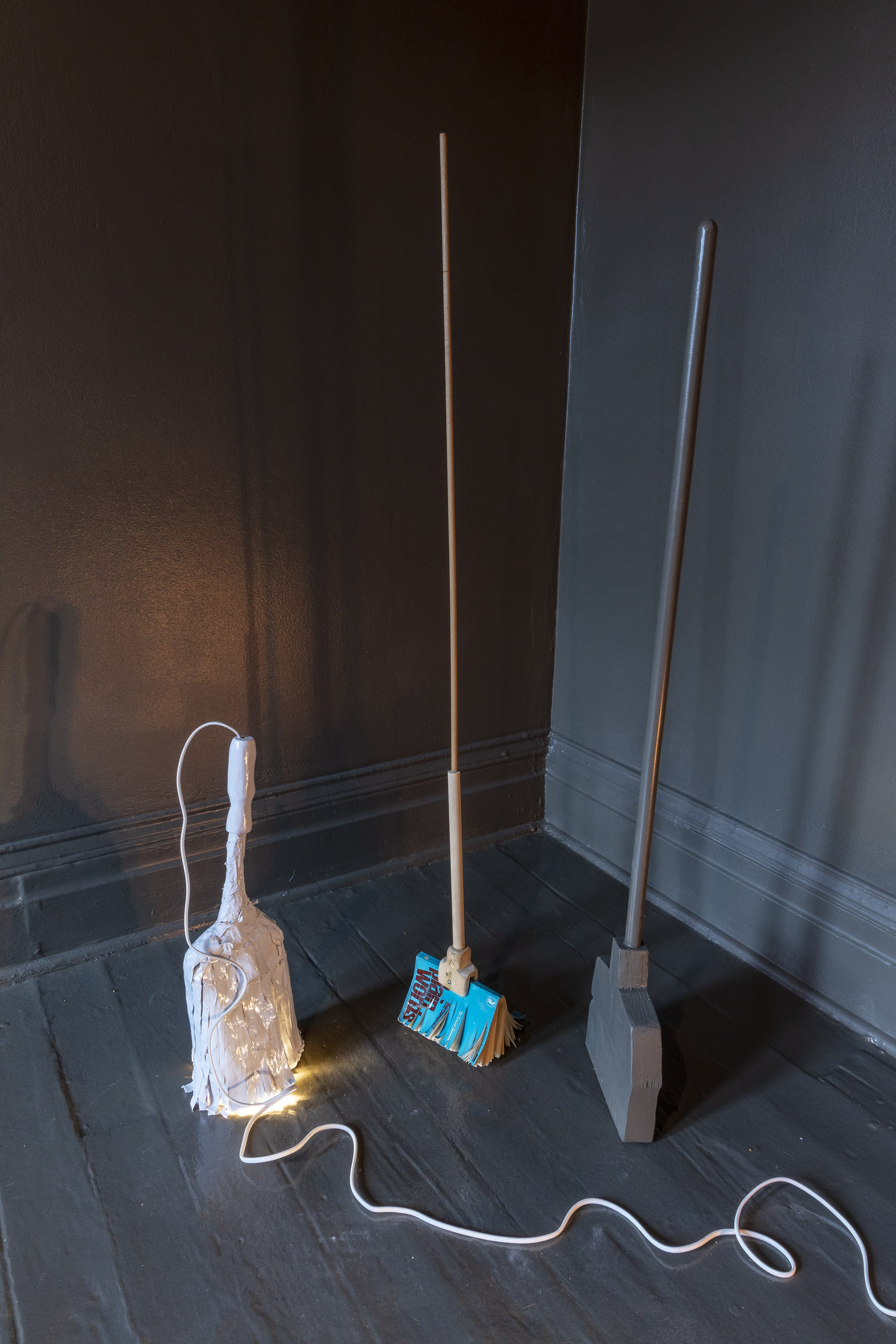

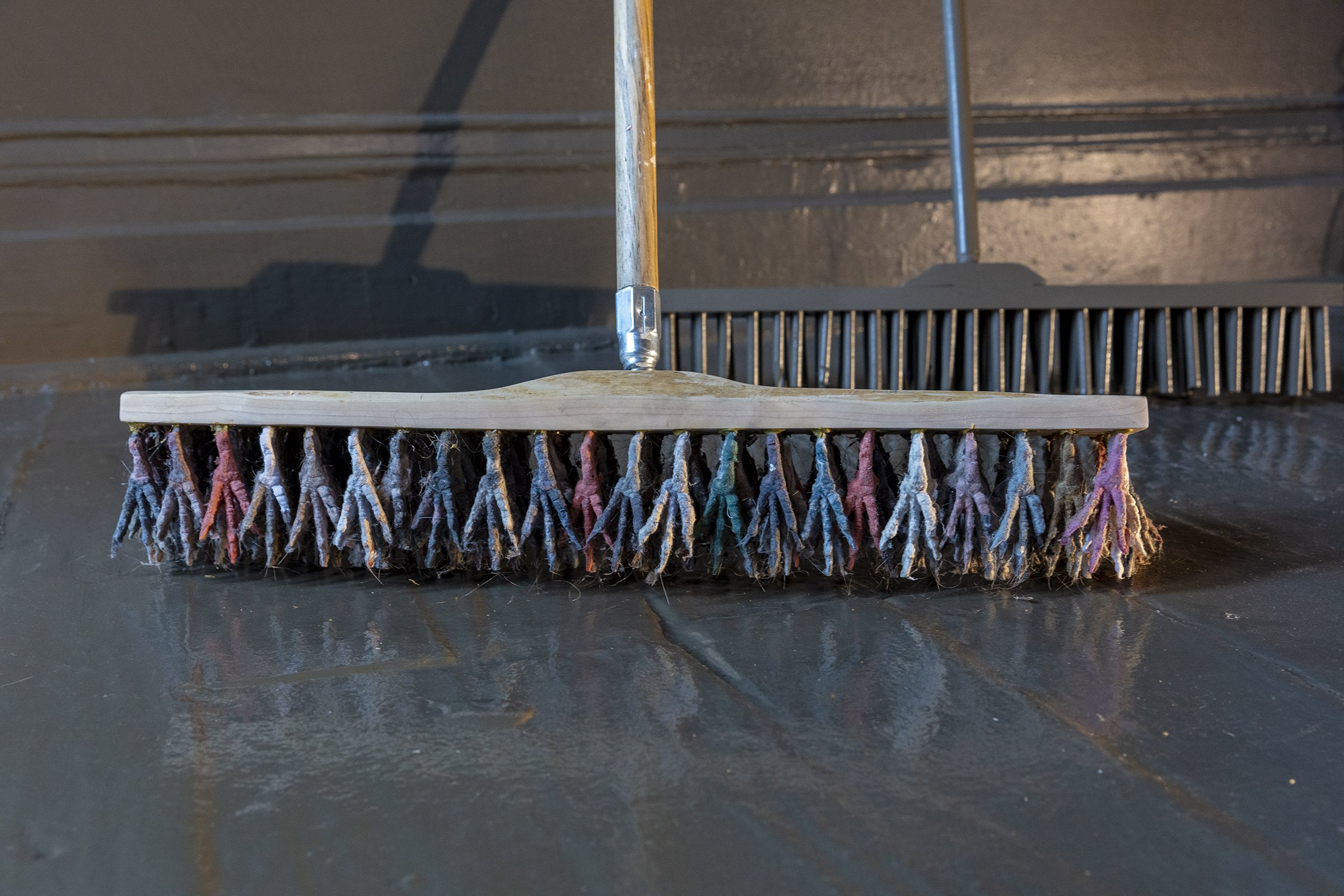
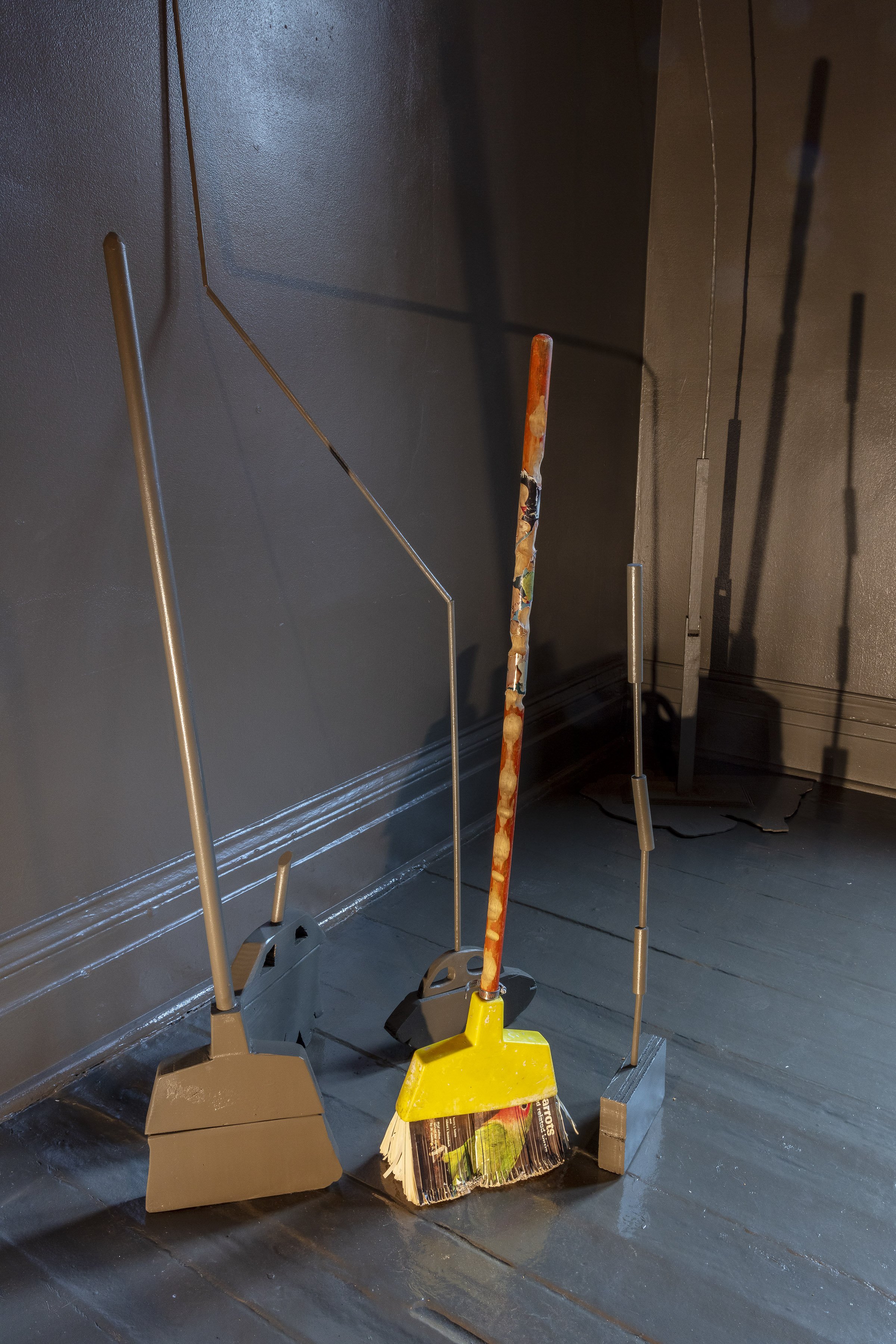
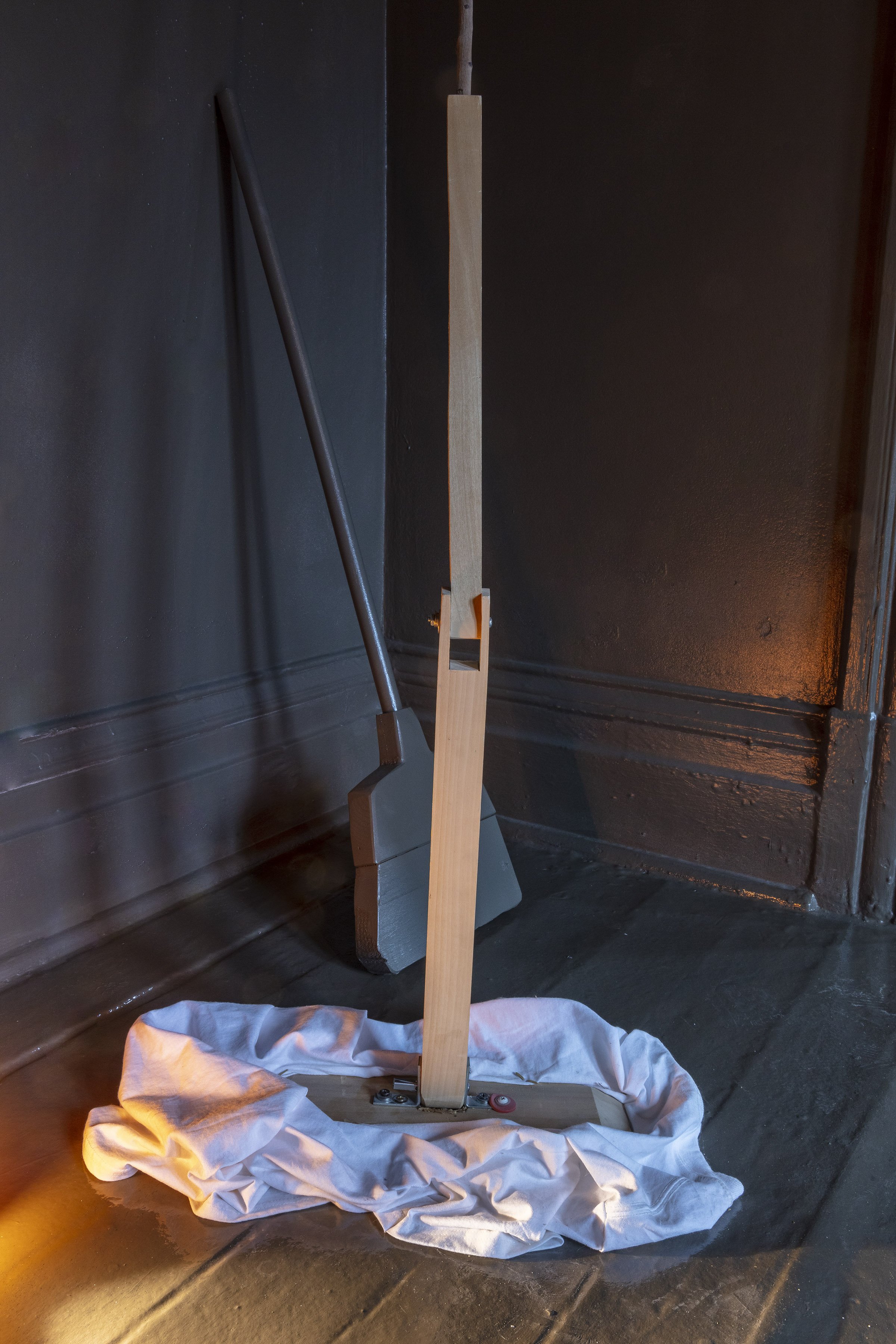
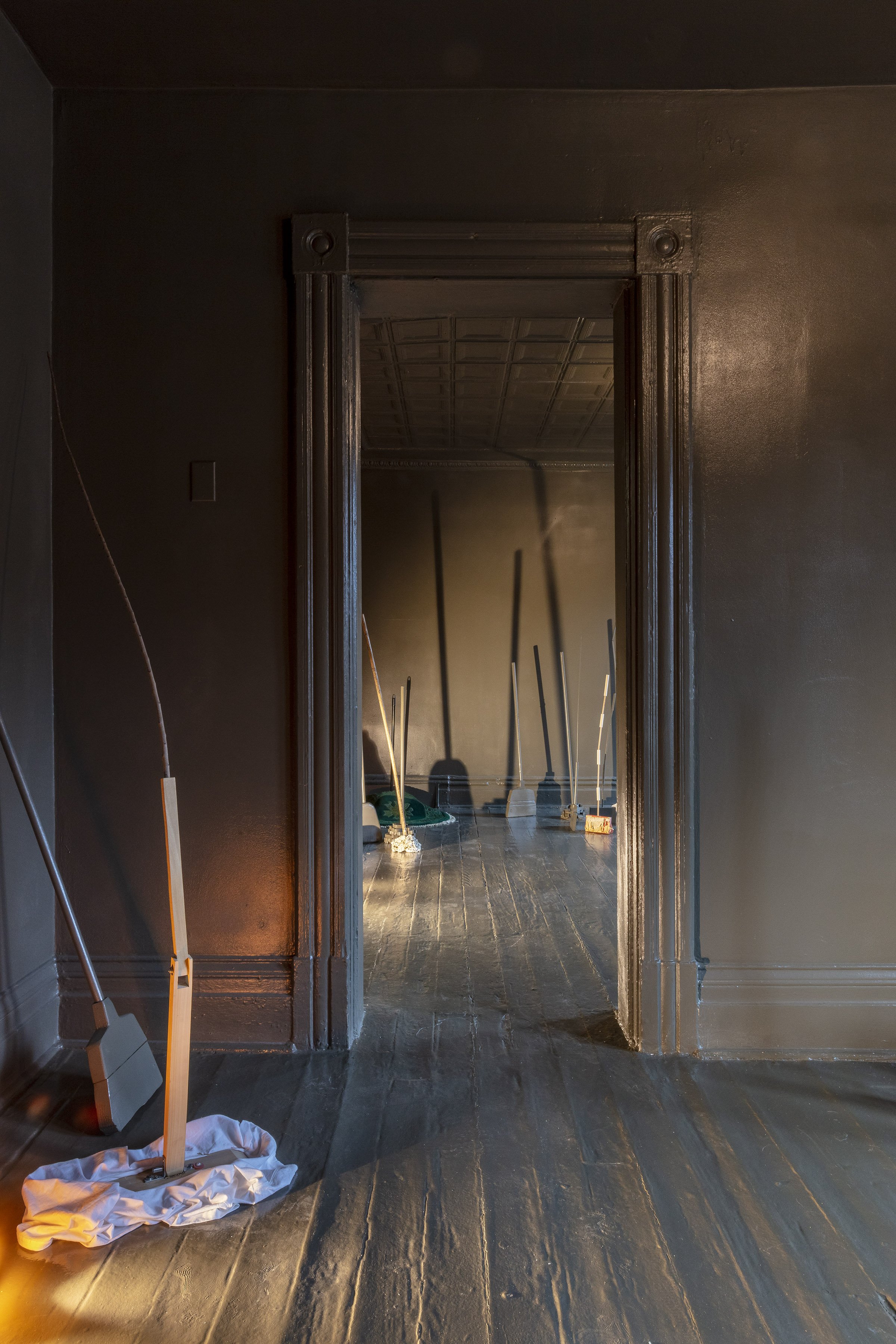
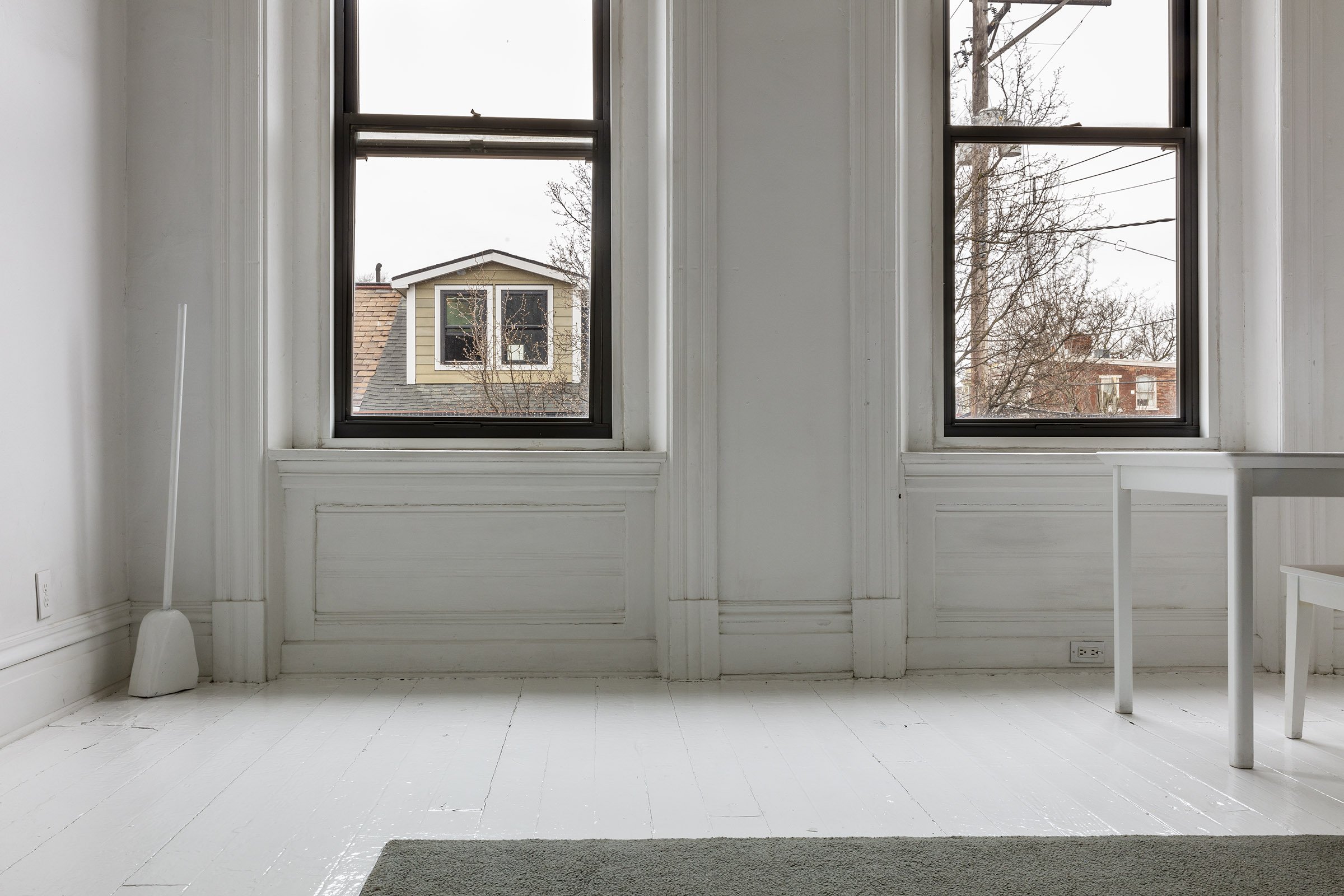
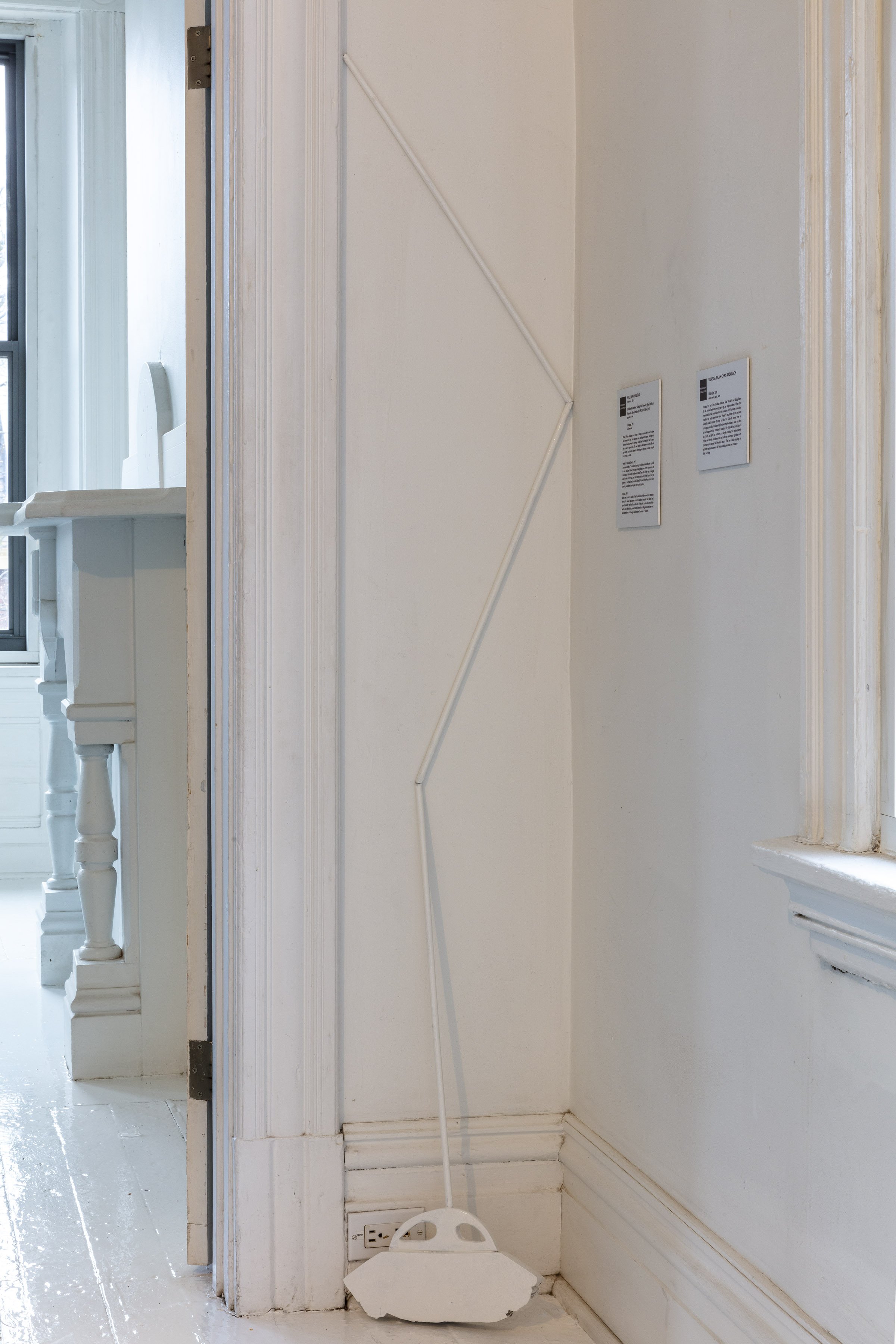
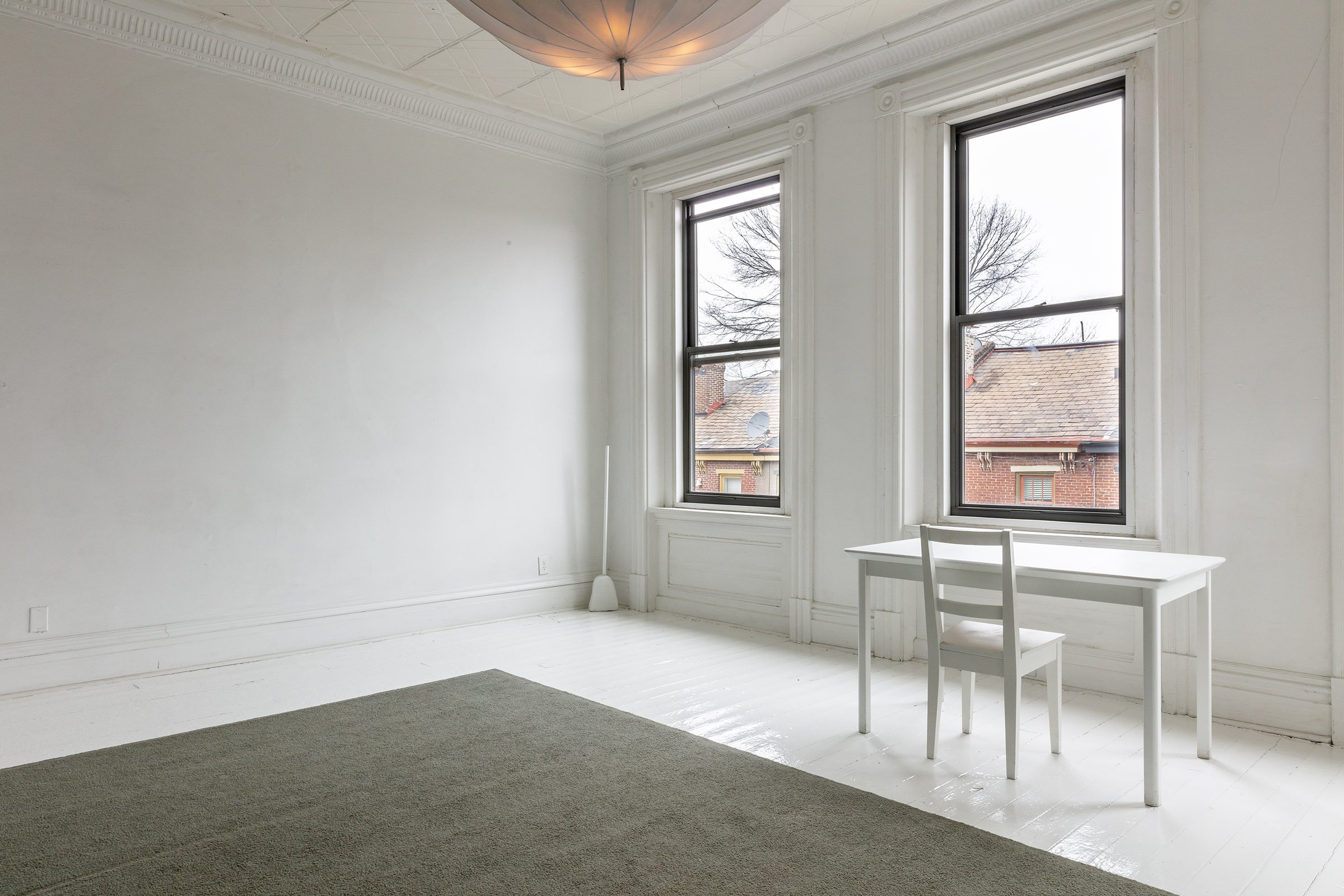
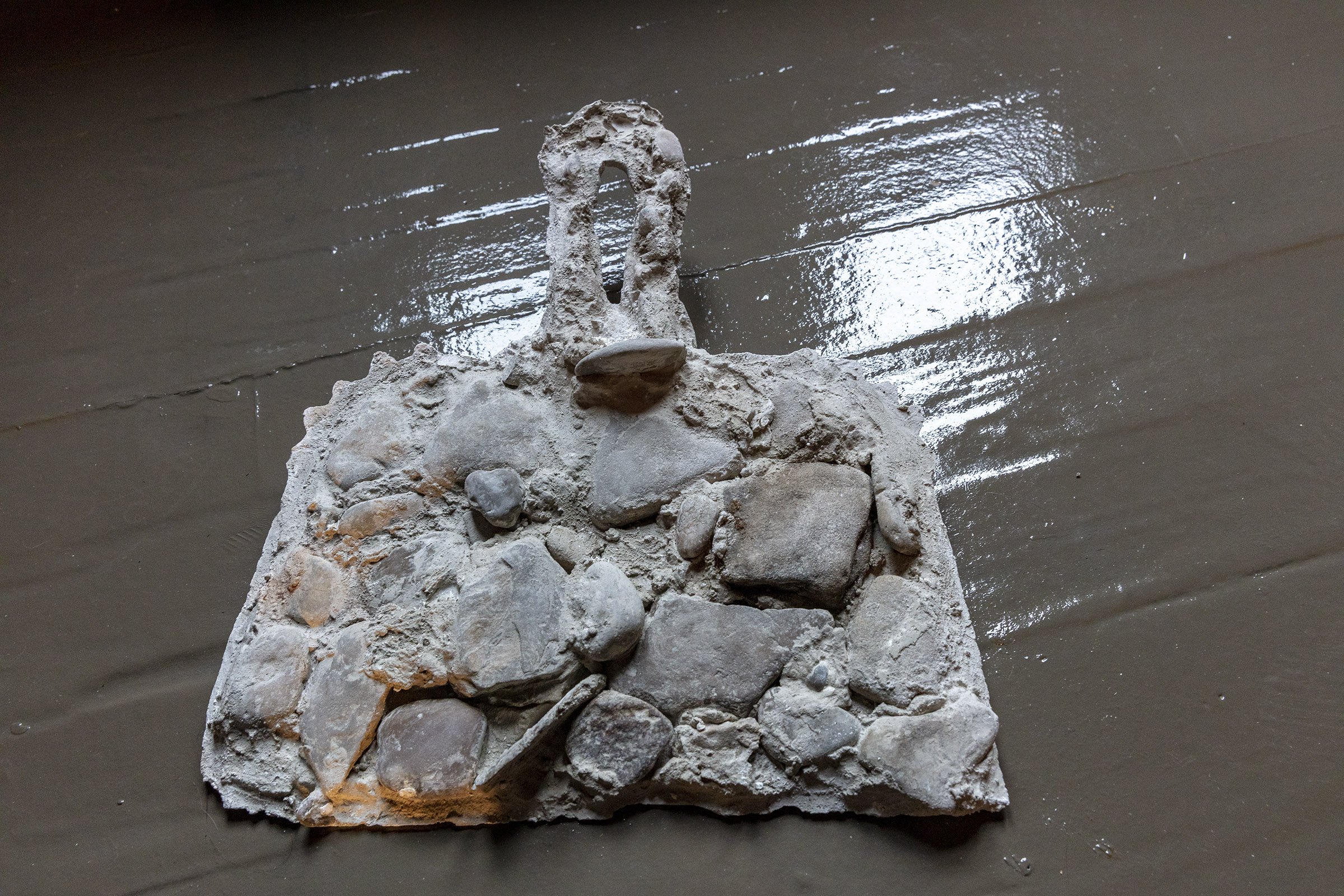
Do this while I wait, 2023
curated by Denise Markonish
Materials: wood, paint, smokebush stems, assorted houseplant roots, carrots, dryer lint, matchsticks, rubber, cement, stone, beads, broom, wire, dustpan, carpet, ink, paper, light socket, plain words paperback, instant vocabulary paperback, parrots and related birds paperback, ceramic spaghetti, glue, verbs, plastic shopping bags, pillowcase, bucket, hardware
Images by Tom Little
Text by Denise Markonish
“Things are needy. They take up space. They want attention, and they will drive you mad if you let them.” Ruth Ozeki, The Book of Form and Emptiness, 2022
Lydia Rosenberg is acutely aware of the secret language of objects; of their neediness, and of our own co-dependencies. She understands the life of objects, often rescuing things that would normally find their way to the recycling bin. Like a bowerbird, she amasses and assembles and gives voice to sticks, used books, broom handles, and the very dust they once swept up or created. In 2019, Rosenberg began writing an ongoing novel-as-sculpture. Blurring the boundaries between real life and fiction; writing and object making. Rosenberg writes about the making of objects (which she then makes) and making objects (which she then writes about). This is evident in works such as The Complete Subject and So Vividly Rendered, both of which focus on the character Joanne who obsessively visited over 3,000 paintings of lemons in seven years. No images, only written descriptions exist. Rosenberg crowd sourced the descriptions and then made over 300 lemons, which are exhibited with the descriptions. Later in 2019, Rosenberg wrote the next chapter of her book in the form of the installation and performance Spaghetti Restaurant, where participants were simply eating spaghetti together, and the event itself was incorporated into the narrative.
For Do this while I wait, Rosenberg concentrates on the character of Annette, an artist with a day job who can only spend eight hours a week in her studio due to her work schedule (a case of fact bleeding into fiction as Rosenberg, like all of us, aims to find balance amidst life's obligations). Annette spends as much time making objects as she does listening to guided meditation audio files on her phone. These meditations create a narrative in which domestic cleaning objects are the key to decluttering her mental landscape. In the novel, Rosenberg writes: “In her meditations household cleaning equipment took on supernatural powers for energetic maintenance. How depressing she found her imagination for transcendent object conjuring; an unending accumulation of brooms, sponges, drain catchers and exhaust pipes filled up her pathway to spiritual oneness.”
For the Mattress Factory, Rosenberg exhibits the objects that Annette has been making – some she has written about and others are made on behalf of the character and remain as yet unwritten. And what are these objects exactly? They are hybrids, much like Annette: shredded books or cast crow’s feet become broom bristles, a lamp becomes formless, a pillowcase becomes a bucket, and ceramic spaghetti turns into a mop. These transmutations get at the heart of how we tend to care for objects rather than ourselves or other humans and how this is further complicated when the imaginary becomes material and vice versa. Rosenberg, us visitors, and the objects alike, all become form and emptiness, like a 21st century Miss Havisham, of who Charles Dickens wrote: “But, I saw that everything within my view which ought to be white, had been white long ago, and had lost its luster, and was faded and yellow.” In Rosenberg’s work the world doesn’t yellow (lemons aside) but it frays at the edges while tenuously keeping its grasp on the material reality within a world of words.